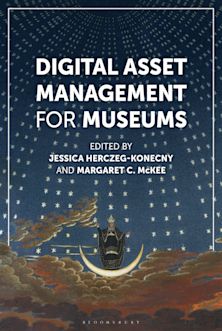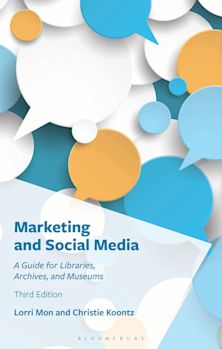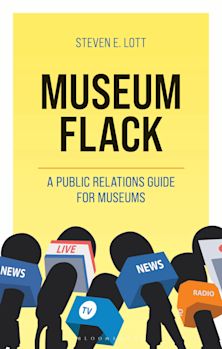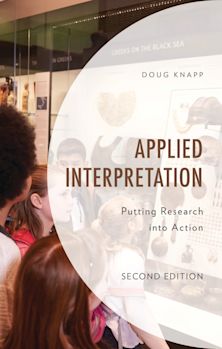- Home
- ACADEMIC
- Museum Studies
- Nearby History
Nearby History
Exploring the Past Around You
- Textbook
Nearby History
Exploring the Past Around You
- Textbook
Buy from Bloomsbury eTextBooks
You are now leaving the Bloomsbury Publishing website. Your eBook purchase will be with our partner https://www.vitalsource.com.
Your credit card statement will show this purchase originating from VitalSource Technologies. They will also provide any technical assistance you might require.
You must sign in to add this item to your wishlist. Please sign in or create an account
Description
In the Second Edition of Nearby History, the authors have updated all chapters, introduced information about internet sources and uses of newer technologies, as well as updated the appendices.
A comprehensive handbook on investigating the history of your community, family, local institutions, and cultural artifacts, Nearby History guides you in researching the world close at hand. Nearby History provides insights on how to find and use published, unpublished, visual, and material records while also instructing on how to collect information through interviews, connect individual investigations with broader historical issues, and use photographs, documents, and objects in a study. Both professionally trained and self-taught historians will find this work an excellent resource in developing a more comprehensive view of the past.
Individual books on Nearby History topics are also available as a part of The Nearby History Series.
Table of Contents
Chapter 2 1. Why Nearby History?
Chapter 3 2. What can be Done Nearby?
Chapter 4 3. Traces and Storytelling
Chapter 5 4. Published Documents
Chapter 6 5. Unpublished Documents
Chapter 7 6. Oral Documents
Chapter 8 7. Visual Documents
Chapter 9 8. Artifacts
Chapter 10 9. Landscapes and Buildings
Chapter 11 10. Preserving Material Traces
Chapter 12 11. Research, Writing, and Leaving a Record
Chapter 13 12. Linking the Particular and the Universal
Chapter 14 Appendix A: Forms to Request Information from Federal Agencies
Chapter 15 Appendix B: Sample Gift Agreements
Chapter 16 Appendix C: Sources of Archival Storage Products
Chapter 17 Appendix D: Using the World Wide Web (WWW) in Nearby History
Product details
| Published | 20 Sep 2000 |
|---|---|
| Format | Ebook (Epub & Mobi) |
| Edition | 2nd |
| Extent | 304 |
| ISBN | 9780759117143 |
| Imprint | Rowman & Littlefield Publishers |
| Series | American Association for State and Local History |
| Publisher | Bloomsbury Publishing |
About the contributors
Reviews
-
Regardless of career path or historical interest, readers...will find in Nearby History useful material to guide their inquiries and illuminate their research. It should find a place on every scholar's and historical society's reference bookshelf.
Kimberly K. Porter, (University of North Dakota), The Annals Of Iowa
-
David Kyvig and Myron Marty have issued a second edition of their fine introduction to the study of 'nearby history' that takes account of new developments in computer technology, desktop publishing, and the Internet. [They] use the concept of nearby history to argue forcefully that local historical concerns are always linked to larger historical issues and to the essence of public history. They then offer an eminently readable tour of basic historical research methodology. Their presentation is so sensitive to both practical and historiographical concerns that doctoral students, as well as amateur local history sleuths, will benefit from reading this book.
David A. Zonderman, (North Carolina State University), North Carolina Historical Review
-
Highly professional.... Kyvig and Marty provide an excellent discussion of the reasons for and methods of collecting and analyzing this 'nearby history' .... By reading Nearby History and following its suggestions, researchers will find sources that help to place forebears in their world.
Debra L. Wiley, National Genealogical Society Quarterly
-
I am hardly a disinterested reviewer of Nearby History; the book's first edition changed my life, and I've written fan mail to its authors.... The new edition... includ[es] a brighter graphical design and cleaner reproduction of well-chosen photographs and documents, a number of them new.... The text has been polished and updated, including a useful new section on copyright... From the book's opening... to the conclusion's deep understanding of history-doing as a basic human need, Nearby History is a gentle, powerful manifesto.... The most comprehensive manual for doing history from scratch, Nearby History also identifies the potential of the nearby past to offer striking insight into the most significant historical topics.
Lorraine C. McConaghy, (Museum of History and Industry, Seattle), Oregon Historical Quarterly
-
Nearby History shows that any literate person can master historical research techniques. Each chapter describes methods for collecting and using evidence from a person's nearby world-written documents, oral testimony, visual objects, buildings, photographs, physical landscapes-for historical studies of families, neighborhoods, institutions, and communities as a whole. After presenting the case for doing nearby history, the authors offer suggestions for possible subjects for such study. In the last chapter, they show how each unique community, local institution, physical structure, and family is linked to a universal sharing of origin, motivation, design, and behavior. Of particular value are the several appendixes: forms to request information from federal agencies, such as veterans records, passenger ship arrival data, census records, and land entry files; sample gift agreements, including historical materials and oral history agreements; sources of archival storage products and information; and uses of the Web for doing nearby history. In summary, this book is a 'must have' for any person seeking to master the methodology for capturing local history.
R. E. Marcello, (University of North Texas), Choice Reviews
-
Packed with guidance, information, and sources of help, this handbook is a useful resource for local historians.
Utah Historical Quarterly



































